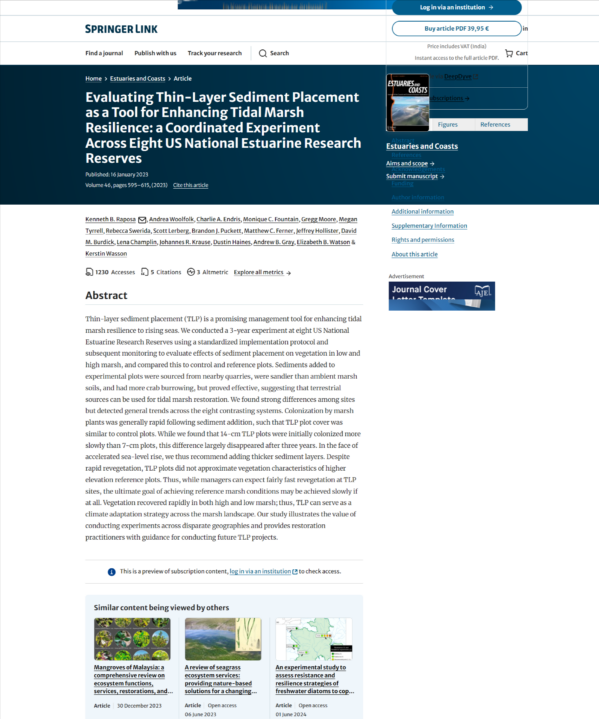Abstract or Summary

Thin-layer sediment placement (TLP) is a promising management tool for enhancing tidal marsh resilience to rising seas. We conducted a 3-year experiment at eight US National Estuarine Research Reserves using a standardized implementation protocol and subsequent monitoring to evaluate effects of sediment placement on vegetation in low and high marsh, and compared this to control and reference plots. Sediments added to experimental plots were sourced from nearby quarries, were sandier than ambient marsh soils, and had more crab burrowing, but proved effective, suggesting that terrestrial sources can be used for tidal marsh restoration. We found strong differences among sites but detected general trends across the eight contrasting systems. Colonization by marsh plants was generally rapid following sediment addition, such that TLP plot cover was similar to control plots. While we found that 14-cm TLP plots were initially colonized more slowly than 7-cm plots, this difference largely disappeared after three years. In the face of accelerated sea-level rise, we thus recommend adding thicker sediment layers. Despite rapid revegetation, TLP plots did not approximate vegetation characteristics of higher elevation reference plots. Thus, while managers can expect fairly fast revegetation at TLP sites, the ultimate goal of achieving reference marsh conditions may be achieved slowly if at all. Vegetation recovered rapidly in both high and low marsh; thus, TLP can serve as a climate adaptation strategy across the marsh landscape. Our study illustrates the value of conducting experiments across disparate geographies and provides restoration practitioners with guidance for conducting future TLP projects.